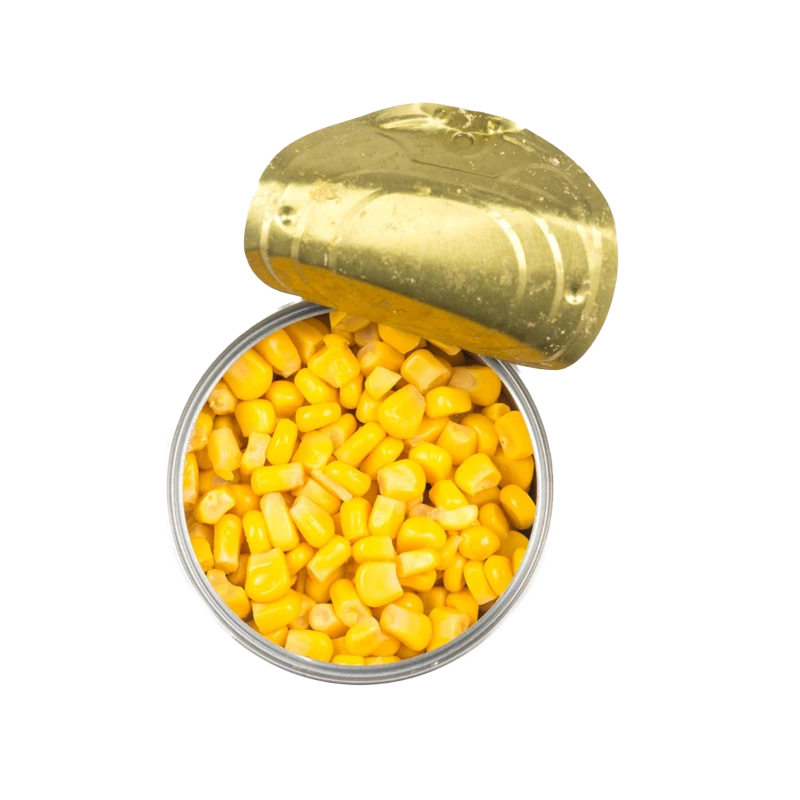Corn — Nutrients, Health Benefits, And Shopping Tips

Written by Listonic Team
Last update on September 5, 2024
Corn nutrients
Nutrition facts
Amount per 100 g
Calories
🔥 86 kcal
| Nutrition per: 100 g | Value | % Daily Value* |
|---|---|---|
| Carbs | 19 g | 6.91% |
| Fiber | 2 g | 7.14% |
| Sugars | 6 g | 12% |
| Glycemic Index | 52 | - |
| Protein | 3 g | 6% |
| Sodium | 15 mg | 0.65% |
| Total Fat | 1 g | 1.28% |
*The % of Daily Value (DV) tells you how much a nutrient in a serving of food contributes to a daily diet. 2,000 calories a day is used for general nutrition advice.
52
🟢 Low Glycemic Index
1 g
🥕 Low Fat Content
Corn facts & tips
Health benefits
- Rich in fiber, promoting digestive health, regular bowel movements, and maintaining a healthy gut microbiome.
- High in vitamins and minerals such as Vitamin B6, folate, and magnesium, which support overall health and well-being.
- Provides sustained energy from complex carbohydrates, making it a good source of fuel for the body and brain.
- Contains antioxidants like lutein and zeaxanthin, which support eye health.
Health risks
- High carbohydrate content which can cause rapid spikes in blood sugar levels, particularly concerning for diabetics when consumed in large quantities.
- Potential for digestive discomfort such as bloating or gas when consumed in large quantities, particularly in individuals sensitive to high-fiber foods.
- Potential for pesticide residue on conventionally grown corn, which can pose health risks if not properly washed or sourced from organic suppliers.
- Potential for GMO content in non-organic corn products, which may be a concern for individuals avoiding genetically modified foods.
How to choose corn
Corn should have bright green husks and silk that is moist and sticky. The kernels should be plump and come to a peak at the top of the cob, showing they are ripe and juicy.
Avoid corn where the husks are dry or brown and the silk is brittle, as this can indicate the corn is old. Cobs that have missing kernels or show signs of mold should also be avoided, as they will not provide the best flavor or texture.

How to store corn
Fresh corn should be stored in the refrigerator, preferably with the husks on. Refrigeration maintains its sweetness and moisture for up to five days.
Leaving corn at room temperature can cause it to dry out quickly. Avoid removing the husks before storage, as they protect the kernels. Keep corn in a plastic bag to maintain humidity levels.
✅ Extra Tip
How long does it last?
Corn can last for 1-2 days at room temperature and up to 5-7 days in the refrigerator. For longer storage, corn can be blanched and frozen, lasting up to 12 months. Proper storage ensures it retains its sweetness and texture.
What to do with leftovers?
Leftover corn can be used in a variety of savory dishes. Add it to salads, soups, or casseroles for added sweetness and texture, or mix it into a pasta dish with fresh herbs and butter. Corn is also great when used as a topping for tacos, nachos, or pizzas.
Use corn in a cornbread or muffin batter for added texture and flavor, or mix it into a stir-fry with vegetables and your choice of protein. If you have a lot of corn, consider making a batch of corn salsa with tomatoes, onions, and cilantro, perfect for serving with grilled meats or fish. Corn can also be blended into a corn soup with cream and spices, or used as a filling for stuffed peppers or empanadas. For a quick snack, enjoy corn on its own with a sprinkle of salt and butter, or mix it into a salad with avocado and lime.
👨⚕️️ Medical disclaimer
Discover products from other categories
Listonic Team
Fact-checked
Our editorial team checked this article to make sure it was accurate at the time of publishing it.
Get the top-rated shopping list app on your phone!







